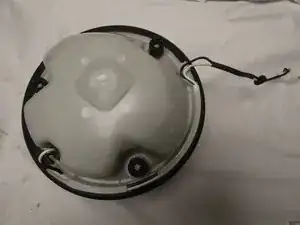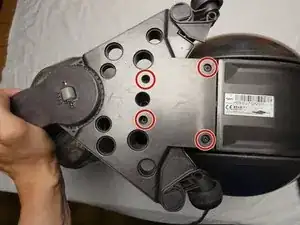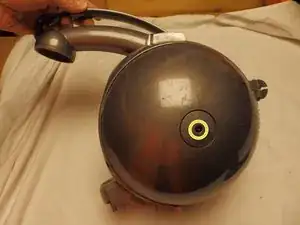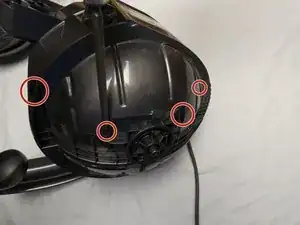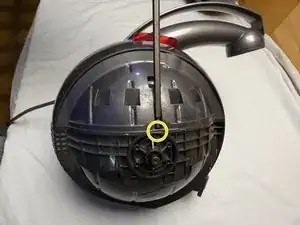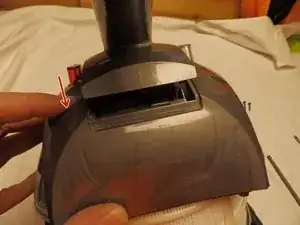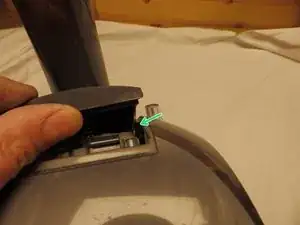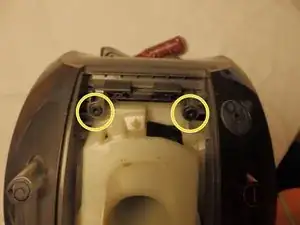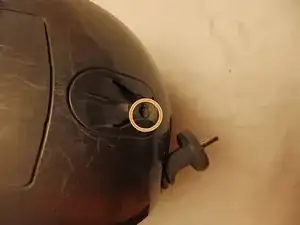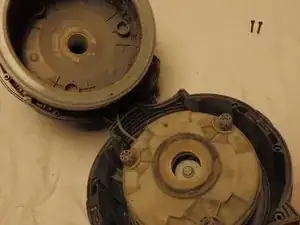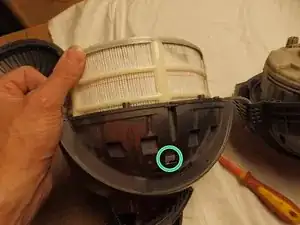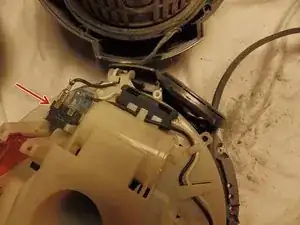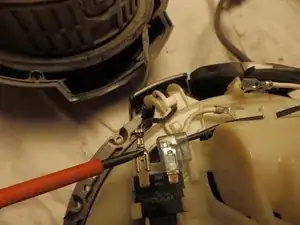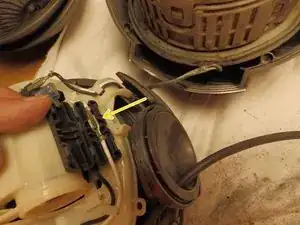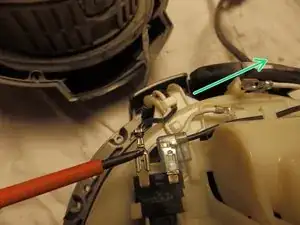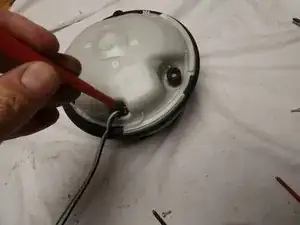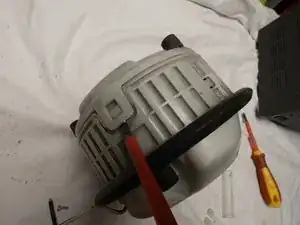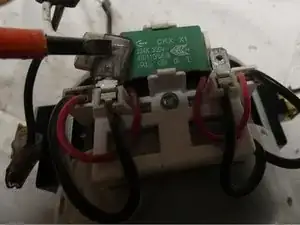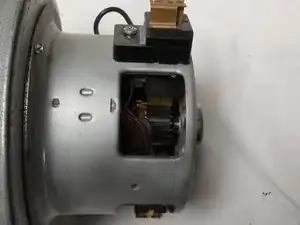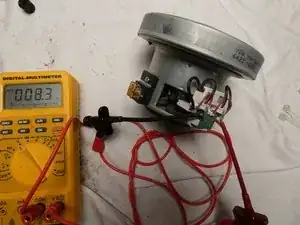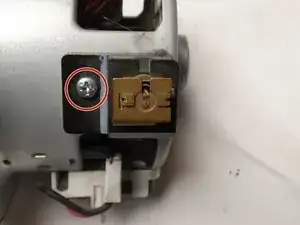Introduction
Main voltage operated electrical devices may only be repaired by a qualified electrician.
There is a risk of injury if instructions are not properly followed. Be careful and heed all warnings.
With these instructions you will only open flat plugs, so that the risk is limited.
- Pull out the power plug before starting
- Do not pull the cables with force
- When reassembling, rewire correctly and make sure the tabs are engaged in the connectors to prevent them from vibrating loose
- If the cable or strands are defective, replace them
Tools
Parts
-
-
Remove the 8 Torx T15, 22mm pan head screws from the bottom…
-
and the 2 22mm Torx T15 screws from the top.
-
-
-
Press the button to release the dust container.
-
Carefully press the locking lugs inwards with a screwdriver or by hand until the upper part with the suction tube can be folded further upwards.
-
Then another 2 Torx T15, 18 mm cylinder head screws become visible, which are removed (they fasten the cable drum on the inside).
-
-
-
Loosen the one PH2 screw of the intake manifold holder (it fastens the cable drum on the inside).
-
-
-
Carefully pull the case halves apart. You now have the HEPA filter and the cable drum in the upper half and the motor in the motor capsule in the lower half.
-
-
-
The upper part is clipped into the housing with 2 locking notches. Try to unhook with a screwdriver and some hand wiggling. Don't grab the HEPA filter too tightly as it is made of paper and is easily dented.
-
-
-
The switch is on the cable drum. The cable is connected to a blade connector which is secured by a fine tab to prevent vibration from loosening it. If you press on the lug with a fine screwdriver, the connection can be released without too much force. Disconnect the black cable.
-
Next to it is a long, black box in which the white cable is plugged. Press the lug with the screwdriver here as well and loosen the plug connection.
-
Then carefully pull both cables out of the strain relief on the housing.
-
Now you have mechanically and electrically separated the motor from the cable drum.
-
-
-
To separate the cable reel and the HEPA filter, hold the HEPA filter carefully and turn the cable reel approx. 90° clockwise. Then both parts can be separated.
-
-
-
Done. You have separated the essential main parts.
-
The cable reel, the HEPA filter and the motor can be easily obtained as spare parts on the Internet. The filter is available for around 60 euros, the motor and cable drum for around 80 euros.
-
-
-
During reassembly it can easily happen that the cable drum is stressed. In this case the vacuum works well but the cable will not automatically rewind if you press the button.
-
Therefore you have to assure that the white notches (see step 7) fit in the corresponding openings and not being pushed deeper.
-
Thighten the 2 Torx screws from step 4 and the PH2 screw from step 5 only very little. Always test the rewinding function of the cable. Only at the end if the rewinding works well, tighten these screws and close the lid with the suction tube.
-
-
-
Carefully release the black and the white cable from the strain relief on the motor housing.
-
Check for cable breakage and damage to the insulation
-
-
-
Press the cable grommet inwards with your finger or a screwdriver (be careful not to damage the cable insulation).
-
-
-
Open the 3 clips of the motor housing with the screwdriver
-
Remove the 3 rubber wedges and pull the motor out upwards
-
-
-
If you want to remove the cable from the motor, carefully press on the lug so that the blade terminal sleeve can be easily pulled off.
-
Some versions have insulated plugs, some don't
-
-
-
It may be useful to blow the engine clean with a compressed air gun.
-
Check that the rotor turns easily by hand. If not, the engine cannot be saved.
-
Look at the collector. Is it clean and are the carbon brushes on?
-
Look inside the motor and check for discolored windings. Check the interference suppression capacitor for abnormalities.
-
-
-
Check between the terminals with an ohmmeter. Turn the rotor a bit, wait until the reading is constant.
-
Be aware that this instruction was written for the DC52 which is a 230 V version. If you living in a country with other voltage, the numbers for a good motor will be different.
-
Fluctuating and high values can indicate defective windings and/or poor contact of the carbon brushes.
-
I've had two single motors, 5.8-6.0 and 5.6-6.5 ohms respectively, that run fine. One had between 7.6 and 9.2 ohms, this one still ran but had a strong collector fire, which could not be remedied by replacing the carbon brushes.
-
A test with main voltage is possible, but dangerous and only recommended for people who are familiar with it (electricians). Clamp the motor housing as a loose motor can move violently when powered up. Switch on from a safe distance
-
If you have a DC power supply, you can also use it to test. At 10V the good motors had 0.9 to 1 A, the bad and 0.7. At around 5 V the motor starts to turn.
-
-
-
A motor costs between 70 and 80 euros as an original spare part. There are Chinese replicas for 30 euros.
-
A set of carbon brushes costs between 10 and 20 euros but does not solve all problems, if the motor shows other problems (see steps 5 and 6) then better invest in a new motor than a set of carbon brushes.
-
To replace the carbon brushes, loosen the PH1 screw and pull the carbon brushes radially outwards.
-
Follow the steps in reverse order to reassemble your device.
3 comments
Hallo, ich habe bei meinem Dyson DC 52 Motor und HEPA Filter gewechselt in der Hoffnung das der Sauger wieder volle Leistung liefert. Leider ist das nicht der Fall, sobald der Schlauch dran ist kommt am Ende gar keine Saugleistung mehr an. Haben Sie evtl. noch einen Tipp für mich?
Stephen -
Was noch zu sagen ist, nach kurzer Zeit überhizt das Gerät und schaltet ab
Stephen -
Wenn keine Saugleistung kommt, sobald der Schlauch dran ist, liegt es nicht an Motor oder Filter, sondern an einer Verstopfung. Der Dyson ist da störanfällig, da es vom runden Saugschlauch ind den flachen Wellbalg über dem Fahrgestell geht und von dort um die Ecke in den Staubabscheider. In dem Wellbalg können leicht sich Legosteine und andere kantige Gegenstände verkanten, dann noch ein paar Flusen und alles ist dicht. Fahrgestell abschrauben, der Wellbalg lässt sich auch vom anderen Teil abziehen. Mit einem Kabel der Hausinstallation (am besten ein 3x2,5 mm2 oder ein 5x1,5 mm2) lässt sich auch gut durchstochern. So ein Kabel lässt sich biegen und ist doch steif. Wenn der Schlauch selber verstopft, ist es meist am Übergang zum Handstück. Auch hier hilft mit dem Kabel stochern.
